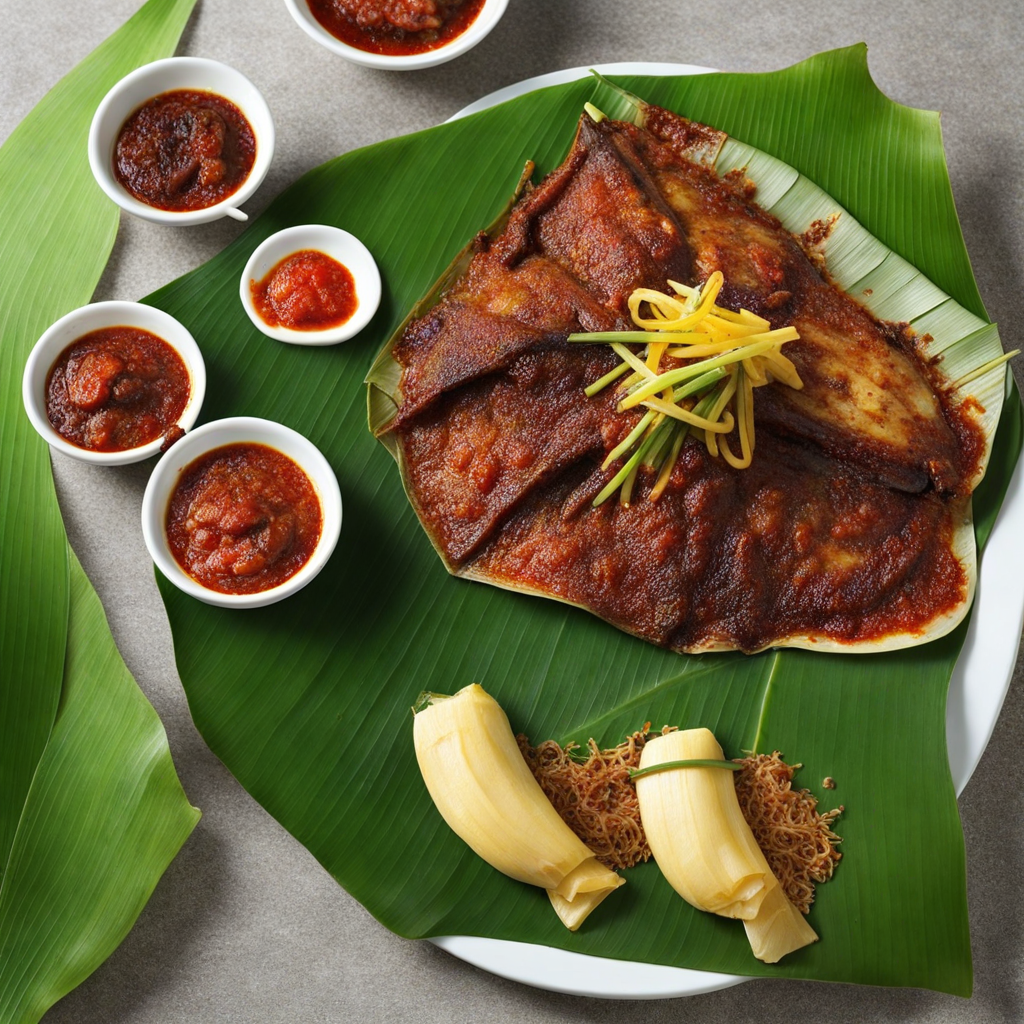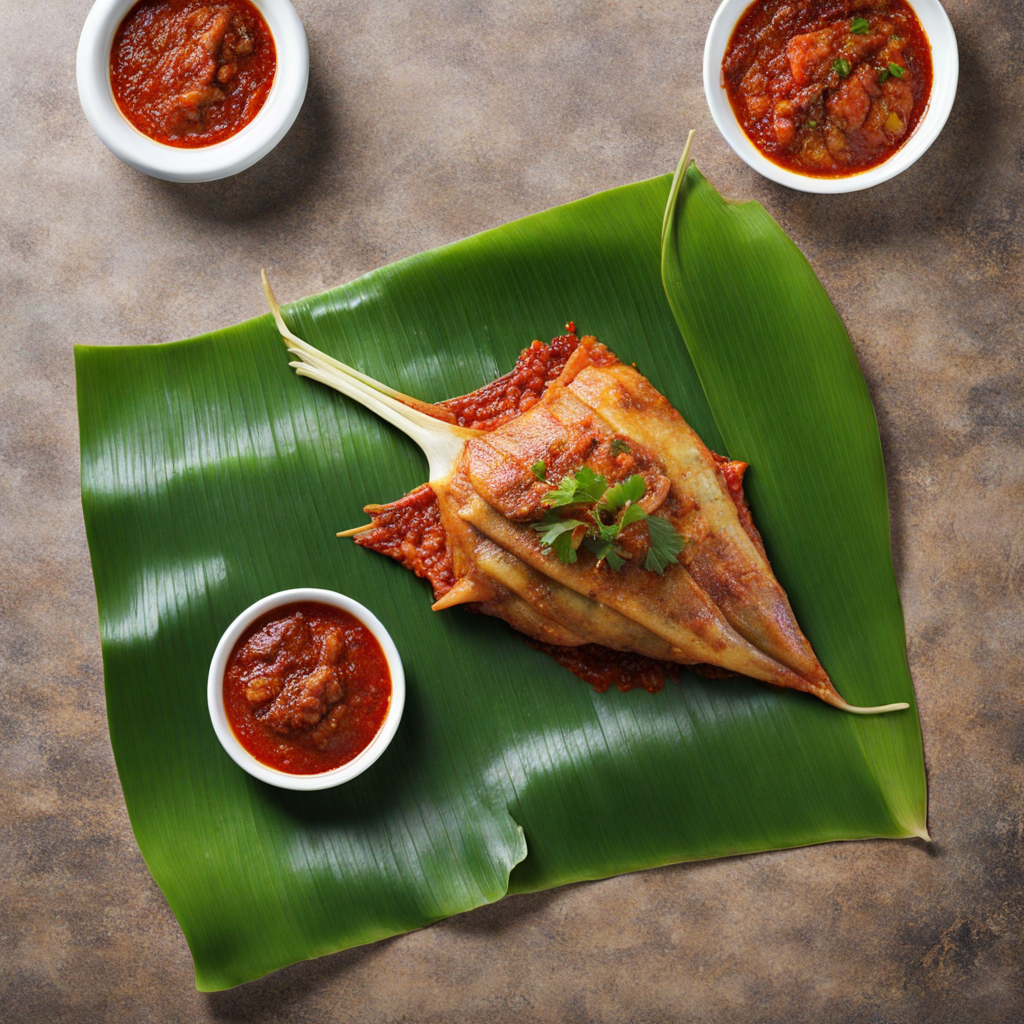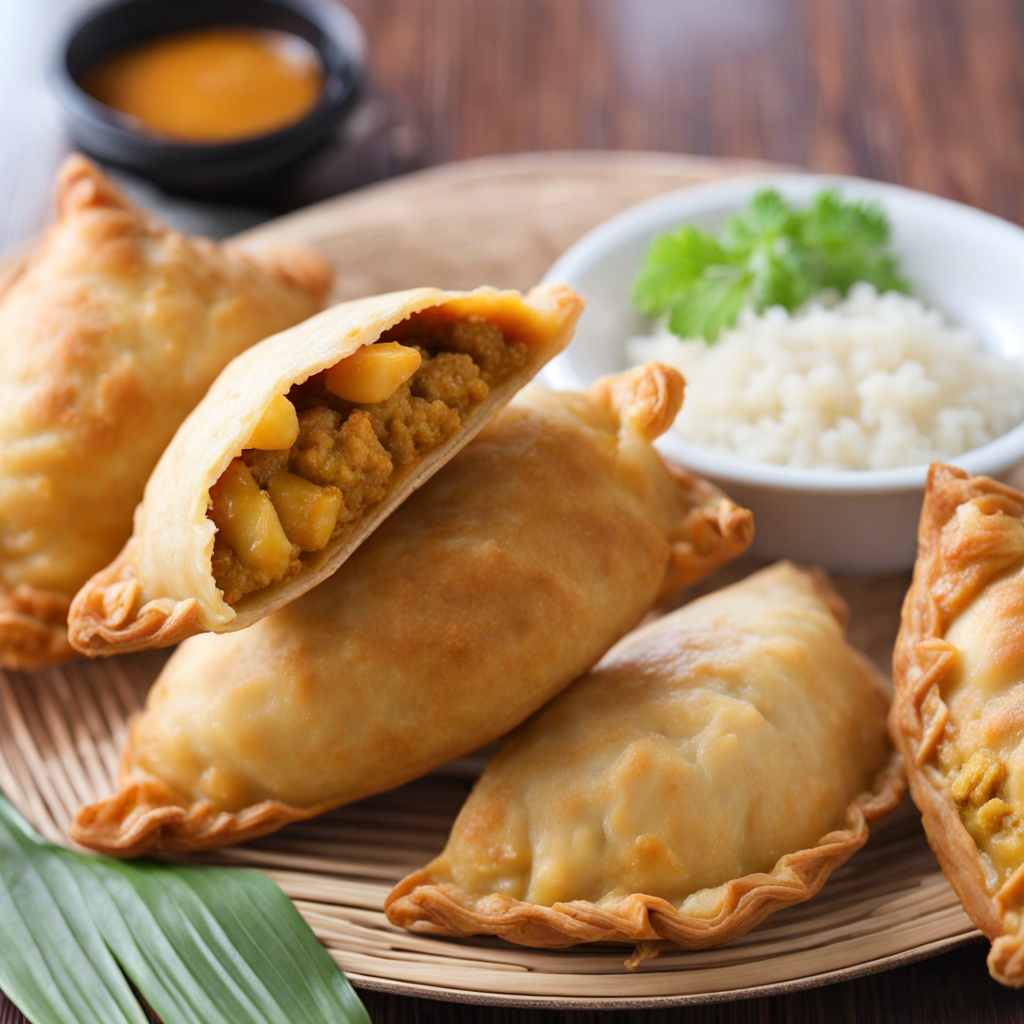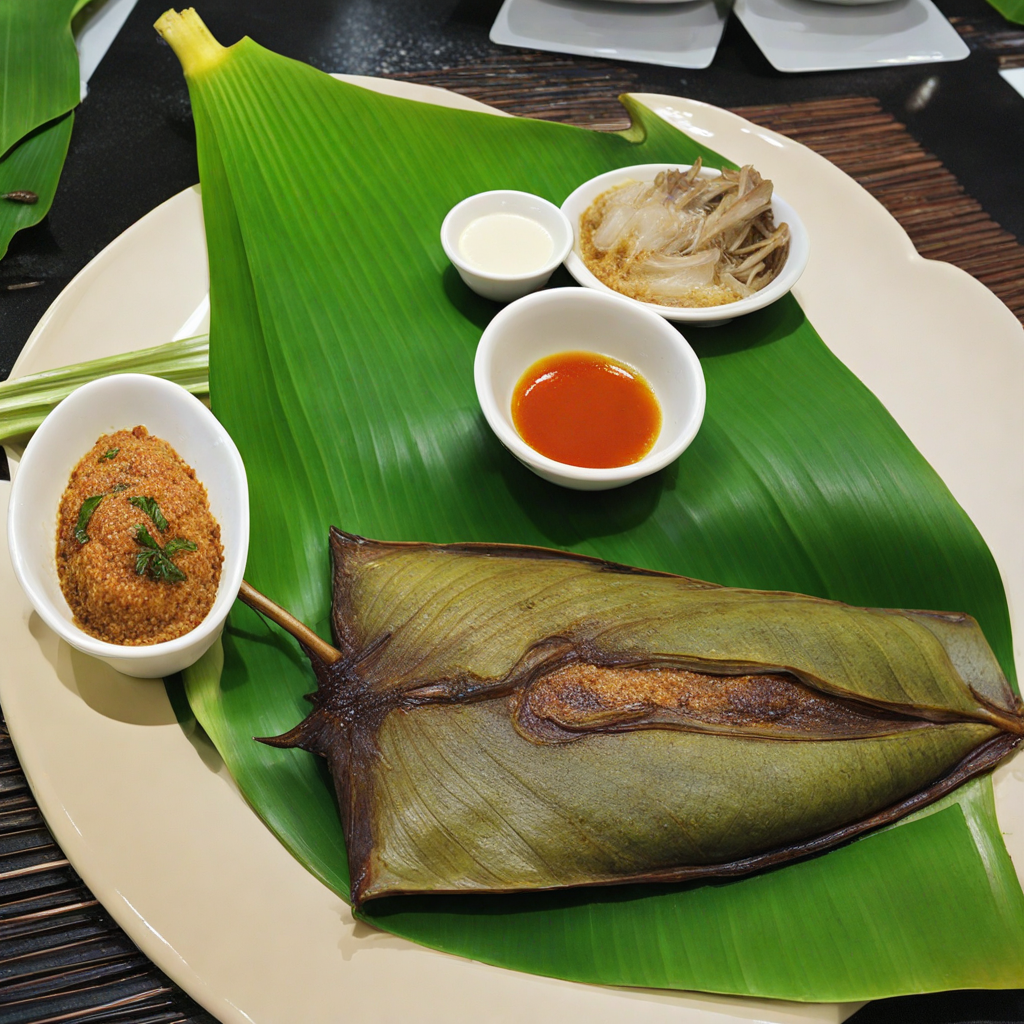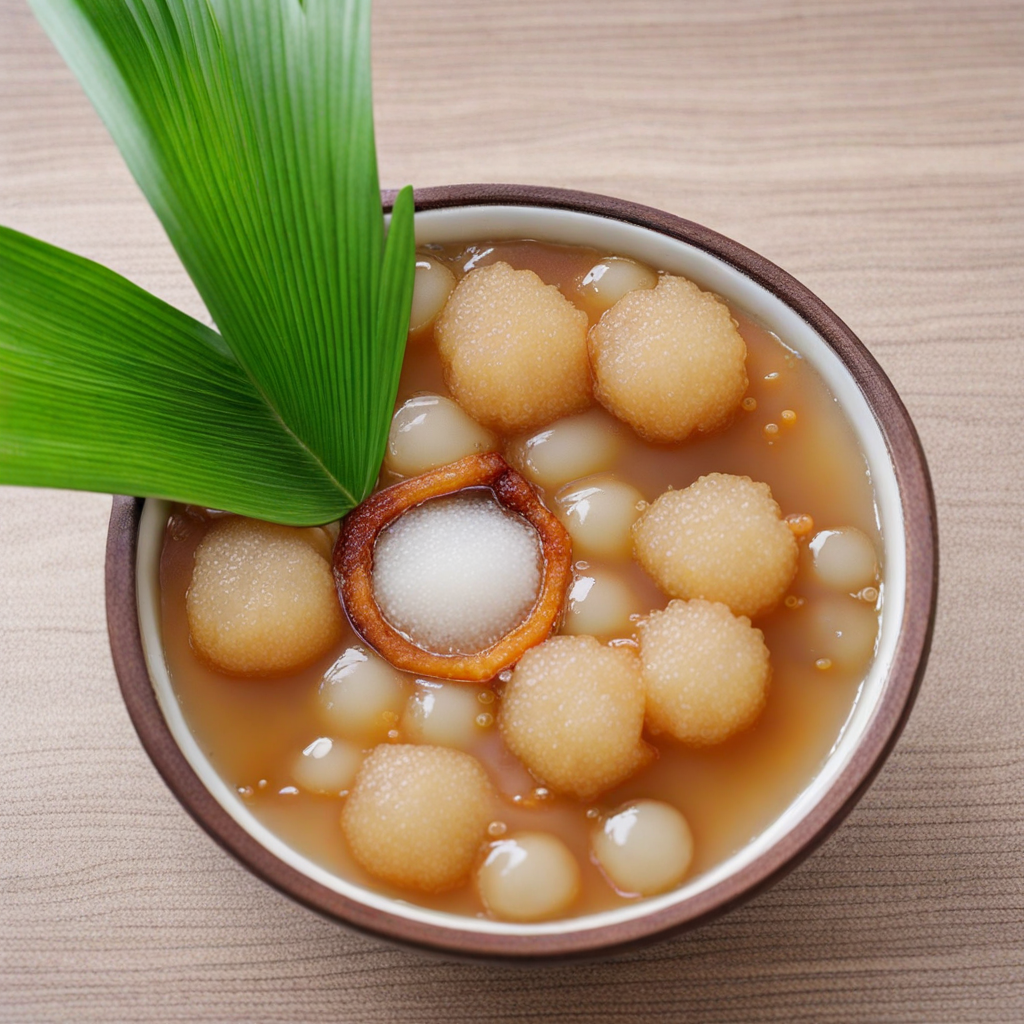Sambal Stingray
Sambal Stingray is a tantalizing dish that showcases the rich culinary heritage of Singapore, combining the freshness of the ocean with bold and spicy flavors. This dish features stingray, a type of flat fish, which is typically marinated in a spicy sambal paste made from a blend of red chilies, garlic, shallots, and sometimes belacan (fermented shrimp paste). The marinated stingray is then grilled over an open flame, allowing the smoky char to infuse the fish while the sambal caramelizes, creating a delightful contrast between the tender meat and the spicy crust. The result is a dish that is both savory and slightly sweet, with a depth of flavor that leaves a lasting impression on the palate. Often served on a banana leaf, Sambal Stingray is not only a feast for the taste buds but also a visual delight. The vibrant red sambal contrasts beautifully with the light-colored stingray flesh. Accompanied by a squeeze of fresh lime, the dish becomes even more refreshing, cutting through the richness of the sambal. It is typically enjoyed with steamed rice or as part of a larger meal, where its boldness can complement other dishes, such as grilled seafood or stir-fried vegetables. For those seeking a unique culinary experience, Sambal Stingray offers a perfect blend of spice, smoke, and freshness, making it a must-try when exploring Singaporean cuisine. This dish reflects the multicultural influences of the region, particularly the Malay and Peranakan traditions, and is often enjoyed at hawker centers or seafood restaurants, where the atmosphere is lively and the flavors are vibrant. Each bite transports you to the heart of Singapore’s food scene, where the love for bold flavors and fresh ingredients come together in perfect harmony.
How It Became This Dish
The History of 叁巴魔鬼鱼 (Sambal Devil Fish) in Singapore #### Origins The dish known as 叁巴魔鬼鱼, or Sambal Devil Fish, is a vibrant testament to Singapore's multicultural culinary landscape, combining influences from Malay, Chinese, and Indian cuisines. The term "魔鬼鱼" translates to "devil fish," referring to the devil ray, a type of fish that is often used in this dish. The name "叁巴" (sambal) refers to a spicy chili paste that is a staple in many Southeast Asian kitchens, especially among the Malay and Indonesian communities. The devil ray, with its broad, flat body and long, slender tail, is not only interesting in appearance but also offers a firm texture that holds up well to cooking methods such as grilling or frying. Traditionally, sambal is made from a blend of chilies, garlic, shallots, and other spices, often incorporating shrimp paste (belacan) for umami depth. This versatile condiment, which can vary in heat and flavor depending on the region and the cook's preferences, serves as the foundation for many dishes in Southeast Asia. #### Cultural Significance Sambal Devil Fish embodies Singapore's identity as a melting pot of cultures. The dish is particularly celebrated among the Malay community, where sambal serves as a crucial component in traditional meals. In this context, it is often served with rice, grilled meats, or seafood, enhancing the overall flavor profile of the meal. The dish gained popularity not only as a staple in local households but also as a beloved item in hawker centers, where Singaporeans and tourists alike can sample authentic local flavors. The vibrant red color of the sambal, paired with the rich and tender flesh of the devil ray, creates an inviting presentation that appeals to both the eyes and the palate. Moreover, sambal itself has a cultural significance that extends beyond mere taste. It represents the culinary heritage of the region, showcasing the use of locally available ingredients and traditional cooking techniques passed down through generations. The dish is often associated with communal dining experiences, where families and friends gather to enjoy a feast together, reinforcing social bonds and cultural identity. #### Development Over Time Sambal Devil Fish has evolved through the years, adapting to changing culinary trends and the availability of ingredients. In the past, the dish was often prepared in home kitchens, where families would use freshly caught devil rays and make sambal from scratch using mortar and pestle. This labor-intensive process was not only a culinary practice but also a communal activity, often involving several family members contributing to the preparation. As Singapore transformed into a modern metropolis in the late 20th century, the dynamics of food preparation and consumption changed significantly. The rise of hawker centers in the 1970s and 1980s allowed local chefs and food vendors to introduce their interpretations of traditional dishes to a broader audience. Sambal Devil Fish became a sought-after item in these vibrant food markets, where it was often served with a side of steamed rice and vegetables, making it accessible to a diverse range of diners. The popularity of the dish has also prompted creative adaptations. Some chefs began to experiment with different types of sambal, incorporating ingredients such as mango, pineapple, or even coconut milk to create unique flavor profiles. These variations not only reflect individual culinary creativity but also the influence of other cultures, showcasing the dynamic nature of Singaporean cuisine. With the growing interest in food sustainability, many modern chefs have also embraced the use of sustainable fishing practices, ensuring that the devil ray used in Sambal Devil Fish is sourced responsibly. This shift not only highlights the importance of environmental consciousness but also encourages a deeper appreciation for the ingredients that go into beloved dishes. #### Modern-Day Relevance In contemporary Singapore, sambal devil fish remains a beloved dish, often featured in food festivals and culinary events celebrating local flavors. It has become a symbol of Singapore’s rich heritage, bridging the past and the present while embodying the spirit of innovation that characterizes the city's culinary scene. The dish is also gaining attention beyond Singapore's borders, as the global culinary community becomes more interested in Southeast Asian cuisines. Chefs worldwide are beginning to experiment with sambal in their cooking, leading to the emergence of fusion dishes that incorporate sambal devil fish elements. This international interest not only elevates the dish's status but also serves as a reminder of the interconnectedness of food cultures in our globalized world. Moreover, the resurgence of interest in traditional cooking methods and local ingredients has led to a renewed appreciation for sambal devil fish among younger generations. Many home cooks are now eager to learn how to prepare this dish, celebrating their heritage while also contributing to its evolution through modern interpretations. Cooking classes and food workshops focused on traditional sambal-making techniques are becoming increasingly popular, ensuring that the art of crafting this beloved condiment is passed down to future generations. #### Conclusion The journey of 叁巴魔鬼鱼 (Sambal Devil Fish) is a microcosm of Singapore's broader culinary evolution—a narrative woven through cultural exchange, adaptation, and innovation. As it continues to inspire chefs and home cooks alike, sambal devil fish stands as a delicious reminder of Singapore's rich culinary tapestry, where every bite tells a story of history, community, and cultural pride. Whether enjoyed at a bustling hawker center or prepared in a home kitchen, this dish encapsulates the essence of Singapore—dynamic, diverse, and delicious.
You may like
Discover local flavors from Singapore


